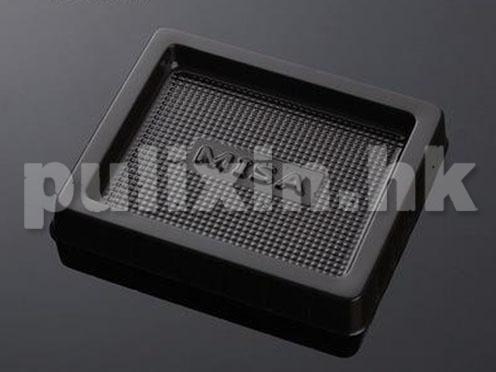Rolo de plástico HIPS com dissipação ESD
Guia de parâmetros
| Categoria: | Folha condutora ESD anti-estática PS PP PET |
| Processo: | Co-Extrusão Squeeze Out |
| Espessura: | 0,18mm-2mm |
| Largura: | 300mm-850mm |
| Cor: | Claro / Transparente / Preto / Branco / Cor personalizada |
| Forma e peso: | Até 150 kg/rolo |
| Certificado: | SGS, ISO9001,ISO14001 |
| Temperatura: | -30℃-120℃ |
Descrição do produto
Introduction of ESD dissipated HIPS plastic roll
ESD dissipative HIPS plastic rolls are a valuable material for applications requiring static control and impact resistance. Their cost-effectiveness and versatility make them a popular choice in various industries, particularly in electronics and cleanroom environments.

Material Composition
High Impact Polystyrene (HIPS): A thermoplastic known for its toughness and impact resistance. It is commonly used in applications requiring strength and durability.
ESD Additives: Special additives are incorporated to make the material ESD dissipative. These additives modify the surface resistivity of the plastic to dissipate static charges.
Surface Resistivity
Typically in the range of 106106 to 10111011 ohms per square. This range is optimal for dissipating static charges without allowing rapid discharge that could damage sensitive electronic components.
Physical Characteristics
Impact Resistance: HIPS provides good impact resistance, making it suitable for applications where mechanical strength is required.
Ease of Processing: Can be easily thermoformed, extruded, and fabricated, allowing for versatile use in manufacturing.
Resistência química
Resistant to many chemicals, including acids and bases, although it is less resistant to solvents compared to other plastics like ABS or polycarbonate.
Applications of ESD Dissipative HIPS Plastic Roll
1. Electronics Packaging: Used to package and protect electronic components that are sensitive to static electricity. The ESD dissipative property prevents static build-up, reducing the risk of damage during handling and transport.
2. Workstation Mats and Liners: Employed in environments where static-sensitive activities take place, such as electronic assembly lines. These mats provide a static-dissipative surface to protect components and workers.
3. Containers and Trays: Used for storage and transport of electronic parts, ensuring that static electricity does not accumulate and cause damage.
4. Cleanrooms and Controlled Environments: Utilized in settings where control of static electricity is critical, such as in semiconductor manufacturing and other high-tech industries.



Advantages of ESD Dissipative HIPS Plastic Roll
Electrostatic Discharge (ESD) dissipative High Impact Polystyrene (HIPS) plastic rolls are specialized materials designed for applications where static electricity can cause problems. Here are several advantages of using ESD dissipative HIPS plastic rolls:
Static Control
1. Static Dissipation: ESD dissipative HIPS plastic rolls prevents the buildup of static electricity by allowing it to dissipate through the material. This is crucial in environments where static discharge can damage sensitive electronic components or ignite flammable substances.
2. Consistent Performance: ESD dissipative HIPS plastic rolls provides consistent static dissipative properties throughout the material, ensuring reliable performance over time.
Material Properties
1. High Impact Resistance: ESD dissipative HIPS plastic rolls offers excellent impact resistance, making it suitable for applications where durability and robustness are required.
2. Versatility: ESD dissipative HIPS plastic rolls is a versatile material that can be easily molded and fabricated, allowing for a wide range of uses in various industries.
Protection of Electronic Components
1. Electronics Safety: ESD dissipative HIPS plastic rolls is ideal for packaging and handling electronic components, protecting them from potential damage caused by static electricity.
2. Compliance with Standards: It meets industry standards for ESD protection, ensuring compliance with safety and quality regulations.
Manufacturing and Processing
1. Ease of Fabrication: ESD dissipative HIPS plastic rolls can be easily thermoformed, cut, and machined, making it convenient for manufacturers to create custom shapes and designs.
2. Cost-Effectiveness: Compared to some other ESD materials, ESD dissipative HIPS plastic rolls is relatively cost-effective, providing good performance without excessive costs.



Parameter of ESD Dissipative HIPS Plastic Roll
Physical and Chemical Properties
| Technical data | Test standard | Test value |
| Densidade | ASTM D-792 | 1.07G/cm3 |
| Yield tensile strength | ASTM D-638 | 25Mpa |
| Tensão de ruptura | ASTM D-638 | 48% |
| Impact strength | ASTM D-256 | 16KJ/m2 |
| Heat distortion temperature (cooling after heating) | ASTM D-648 | 81°C |
| Vicat softening temperature | ASTM D-1525 | 88°C |
| Surface resistance at 8%RH | ASTM D-257 | ≤106Ohm per square |
ESD (electrostatic discharge) materials
| Material | Resistência da superfície (Ω/sq) | Característica |
| Condutor | 103 a 105 | Os materiais condutores têm baixa resistência, pelo que os electrões podem fluir facilmente através da superfície ou do interior destes materiais. A carga fluirá para a terra ou para outro objecto condutor em contacto com o material. |
| Dissipação estática | 105 a 109 | Em comparação com os materiais condutores, os materiais dissipadores de estática podem fazer com que a carga flua para a terra ou para outros condutores de uma forma mais controlada e lenta. |
| Anti-estático | 109 a 1012 | Os materiais anti-estáticos podem inibir a fricção e a produção de electricidade. |
POR QUE NOS ESCOLHERMais >>
Clique para ver a oficina, equipamento, qualificação certificada e força da vantagem de Pulixin(HK)- Um fabricante profissional de chapa PP PS PET
Não Comerciante mas Fábricas

Até 100% Material Virgem

Experiência, certificação e patente

Inspecção de qualidade de alto nível

Várias linhas avançadas 7-12 dias de entrega

Embalagem segura para transporte internacional

Aplicação do produto
Rolo de plástico HIPS com dissipação ESD normalmente tem uma ampla gama de uso, como embalagens de produtos de consumo, bandeja eletrônica, alimentos frescos Crisper, embalagens cosméticas, embalagens de blister de dispositivos médicos.





